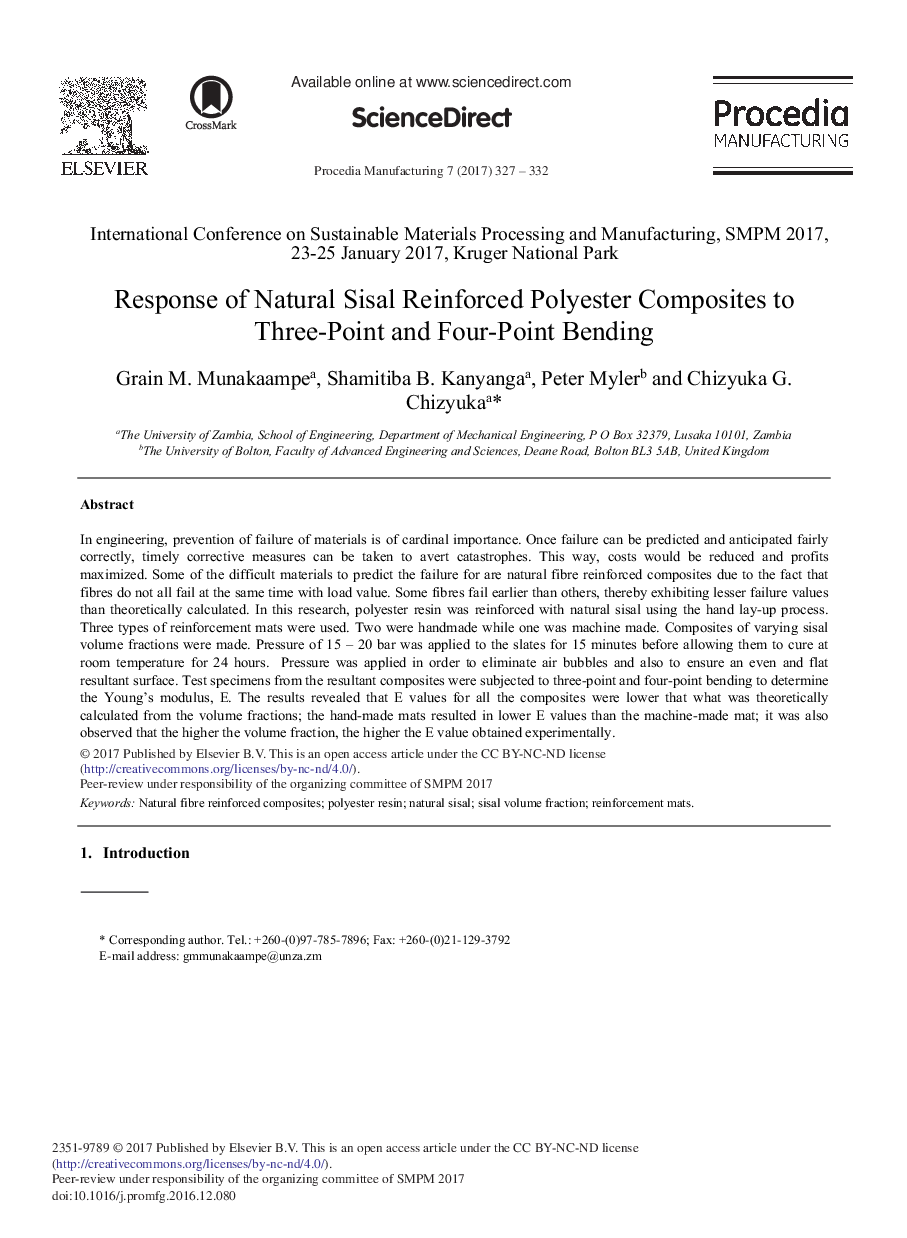| Article ID | Journal | Published Year | Pages | File Type |
|---|---|---|---|---|
| 5129177 | Procedia Manufacturing | 2017 | 6 Pages |
In engineering, prevention of failure of materials is of cardinal importance. Once failure can be predicted and anticipated fairly correctly, timely corrective measures can be taken to avert catastrophes. This way, costs would be reduced and profits maximized. Some of the difficult materials to predict the failure for are natural fibre reinforced composites due to the fact that fibres do not all fail at the same time with load value. Some fibres fail earlier than others, thereby exhibiting lesser failure values than theoretically calculated. In this research, polyester resin was reinforced with natural sisal using the hand lay-up process. Three types of reinforcement mats were used. Two were handmade while one was machine made. Composites of varying sisal volume fractions were made. Pressure of 15 - 20Â bar was applied to the slates for 15Â minutes before allowing them to cure at room temperature for 24Â hours. Pressure was applied in order to eliminate air bubbles and also to ensure an even and flat resultant surface. Test specimens from the resultant composites were subjected to three-point and four-point bending to determine the Young's modulus, E. The results revealed that E values for all the composites were lower that what was theoretically calculated from the volume fractions; the hand-made mats resulted in lower E values than the machine-made mat; it was also observed that the higher the volume fraction, the higher the E value obtained experimentally.
